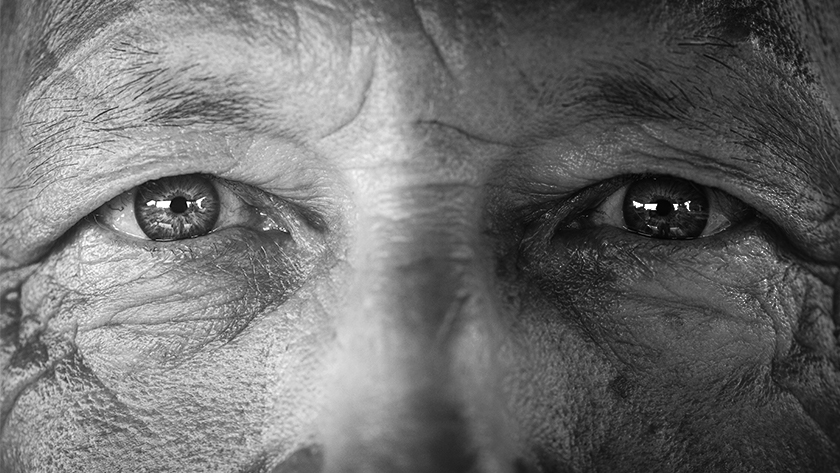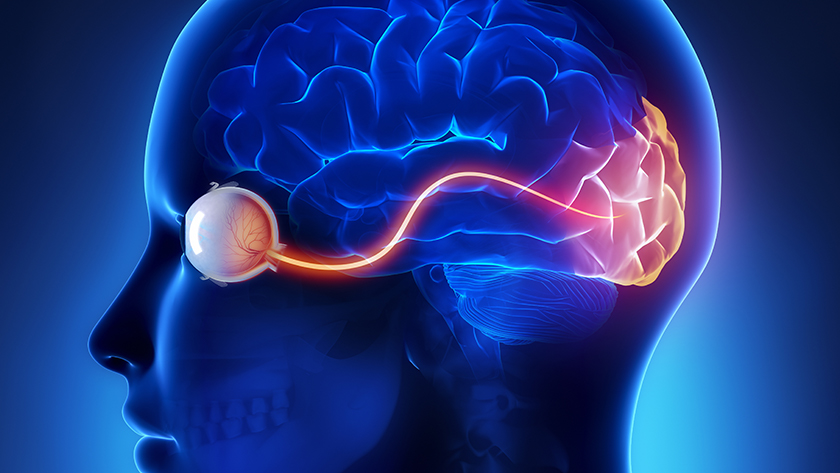
A research team led by Dr. Edward Margolin, a Clinician Investigator at the Krembil Research Institute, has found that a particular form of vision loss known as NAION occasionally occurs in both eyes, despite seeming to affect only one.
NAION (nonarteritic anterior ischemic optic neuropathy) occurs when blood flow to the nerve that connects the eyes to the brain becomes reduced, specifically at the point where the nerve meets with one of the eyes. The loss of blood flow causes nerve damage that typically results in a sudden but painless loss of vision in the affected eye.
Although NAION episodes only affect one eye, approximately 15% of individuals who experience one episode will experience a second that affects their other eye within five years. Intriguingly, when doctors assess patients after a single NAION episode, they often detect minor vision changes in the unaffected eye that the patients had not noticed.
“We wanted to determine whether a substantial portion of the NAION cases that we see in the clinic could be second episodes, with a previous episode having already affected the other eye but going unrecognized,” says Dr. Margolin.
To explore this idea, the research team reviewed nearly 140 past cases of NAION diagnosed in Toronto. In each case, the team reassessed previous eye exams, and medical images and records.
The team found that 10% of these patients had experienced unrecognized episodes in the other eye, accounting for almost 60% of unnoticed vision defects. Interestingly, all the unrecognized episodes had caused defects in the patients’ fields of view that overlapped with those that were later successfully diagnosed.
“Redundancy in our vision could explain why patients often do not notice a problem until NAION episodes affect both eyes,” says Dr. Margolin. “There is considerable overlap in what each eye sees.”
Repeat episodes in the same eye are rare, so knowing whether the other eye has already undergone a NAION episode is important for deciding whether significant preventative action should be taken.
"Our study highlights the importance of carefully examining each eye after a NAION episode," says Dr. Natalie Brossard Barbosa, a former clinical fellow of Dr. Margolin and the first author of the study. "Modifiable factors such as a history of smoking, diabetes, high blood pressure and sleep apnea elevate the risk for NAION, so lifestyle changes or medications can be used to minimize a patient’s risk of experiencing additional episodes."
This work was supported by the UHN Foundation. Edward Margolin is a Professor of Ophthalmology and Vision Sciences at the University of Toronto.
Brossard Barbosa N, Donaldson L, Margolin E. Asymptomatic Fellow Eye Involvement in Nonarteritic Anterior Ischemic Optic Neuropathy. J Neuroophthalmol. 2022 Jun 23. doi: 10.1097/WNO.0000000000001644.

Information collected from the eyes is carried to the brain through the optic nerve, creating the sensation of sight. Each eye connects to this nerve at a point called the optic disc, a small region at the back of the eye where NAION can occur.




